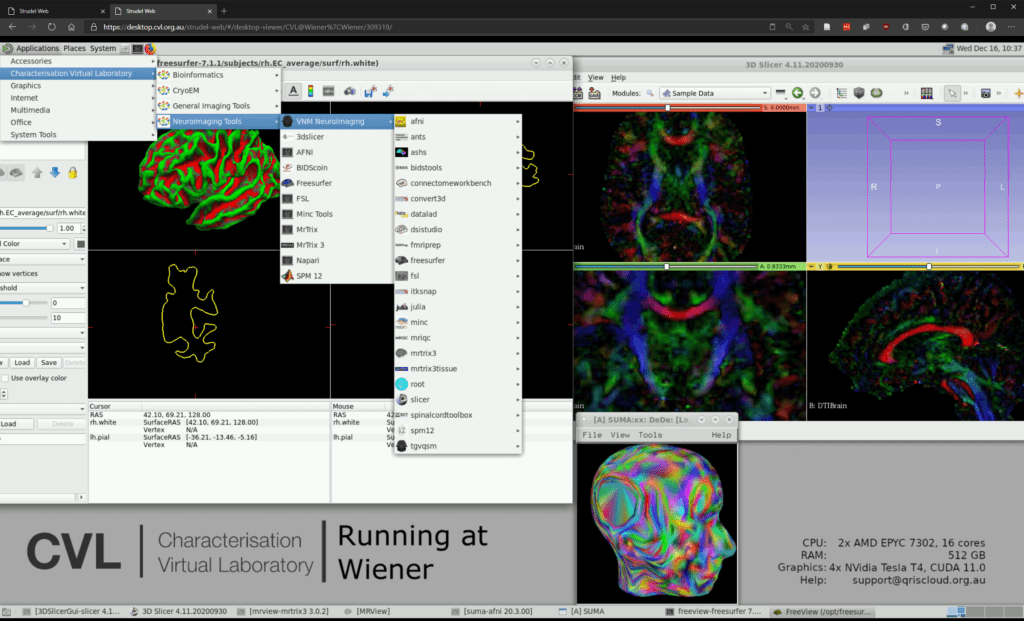
NCRIS Facilities Showcase Cutting-Edge Services for Health Researchers and Industry
Exploreabout NCRIS Facilities Showcase Cutting-Edge Services for Health Researchers and Industry
Queensland researchers are trying to understand how training changes the brain.
A team at the University of Queensland (UQ) are investigating how and if the benefits of learning to do one task transfers to another one. The project involves analysing an array of complex images from neuroimaging instruments, which usually requires extensive time and specialised computing skills to process.
Luckily, the researchers have access to an easy-to-use virtual interface, the Australian Research Data Commons’ co-invested Characterisation Virtual Laboratory (CVL). The CVL allows them to translate and use complex MRI data and images quickly without having specific IT training.

The CVL is a cloud-based virtual desktop workbench that gives researchers access to timely data, allowing them to run and modify experiments and other research activities in real time.
One of the researchers, Shane Ehrhardt, a PhD candidate in the School of Psychology at UQ, is using CVL to access and process the data he needs on his desktop computer.
His research involves combining a number of processes, including brain stimulation and MRI, to investigate how the brain changes with training and how brain stimulation affects different parts of the brain. The aim is to see if the benefits of training transfer to performance on other tasks.
His work includes using the National Imaging Facility’s (NIF) ultra-high field MRI infrastructure data.
“We have a sizeable data set of 250 participants,” Shane said. “We’re doing a comprehensive experiment that includes a lot of large-scale functional and structural imaging in an unprecedented resolution, over multiple time points.”
“I come from a non-computing background,” Shane explained. “I wouldn’t have been able to access and use the data we need for this project without having access to CVL,” he said.
Dr Steffen Bollmann, an Affiliate Research Fellow at UQ’s Centre for Advanced Imaging, introduced Shane and his fellow researchers to CVL. They access the required neuroimaging software packages through the centre’s open source NeuroDesk project, a flexible, scalable and easy-to-use data analysis environment for neuroimaging running on CVL.
“CVL is a great problem solver. Many of our students aren’t particularly technical, which is a challenge, as all of our tools run on Linux. And we have hundreds of software applications,” Steffen said.
“Neuroimaging is quite interactive. Therefore, classical high performance computing systems don’t work for the majority of users. CVL provides researchers with a quick, non-technical format for processing their data and also for 3-D rendering,” he said.
The NeuroDesk project team has just received additional investment as part of the ARDC’s newly announced platforms program to build a platform for electrophysiology data (AEDAPT). It will support new functionality for NeuroDesk, extending its use in electrophysiology and imaging research.
“CVL is a great tool. It’s wonderful to see the tremendous impact it has for the characterisation community in Australia by bringing high performance computing to end-users’ fascinating research projects. It will be wonderful to see more Australian universities adopting CVL in the next few months,” Steffen said.
Learn more about the Characterisation Virtual Laboratory (CVL) hosted on the ARDC Nectar Research Cloud.